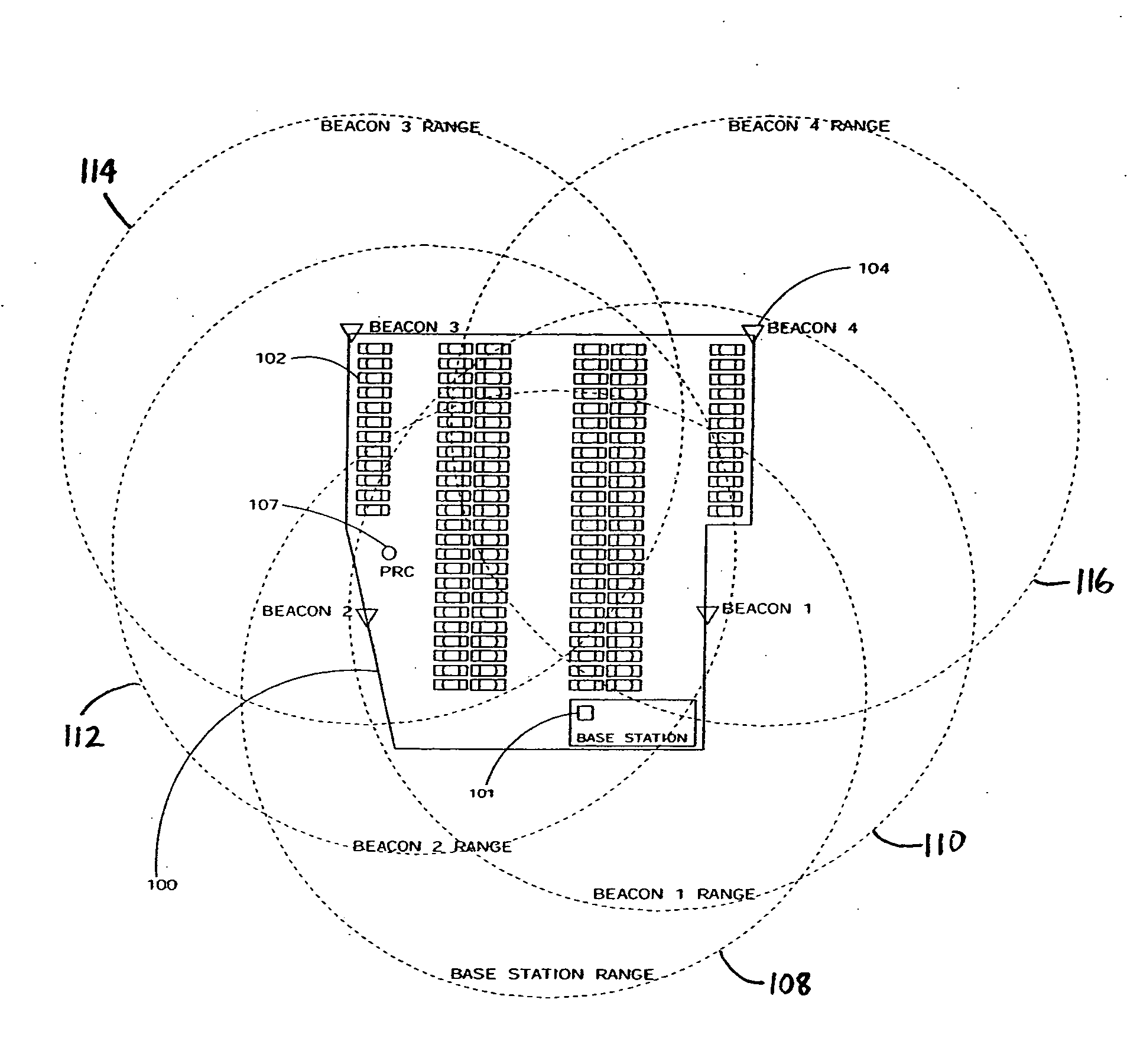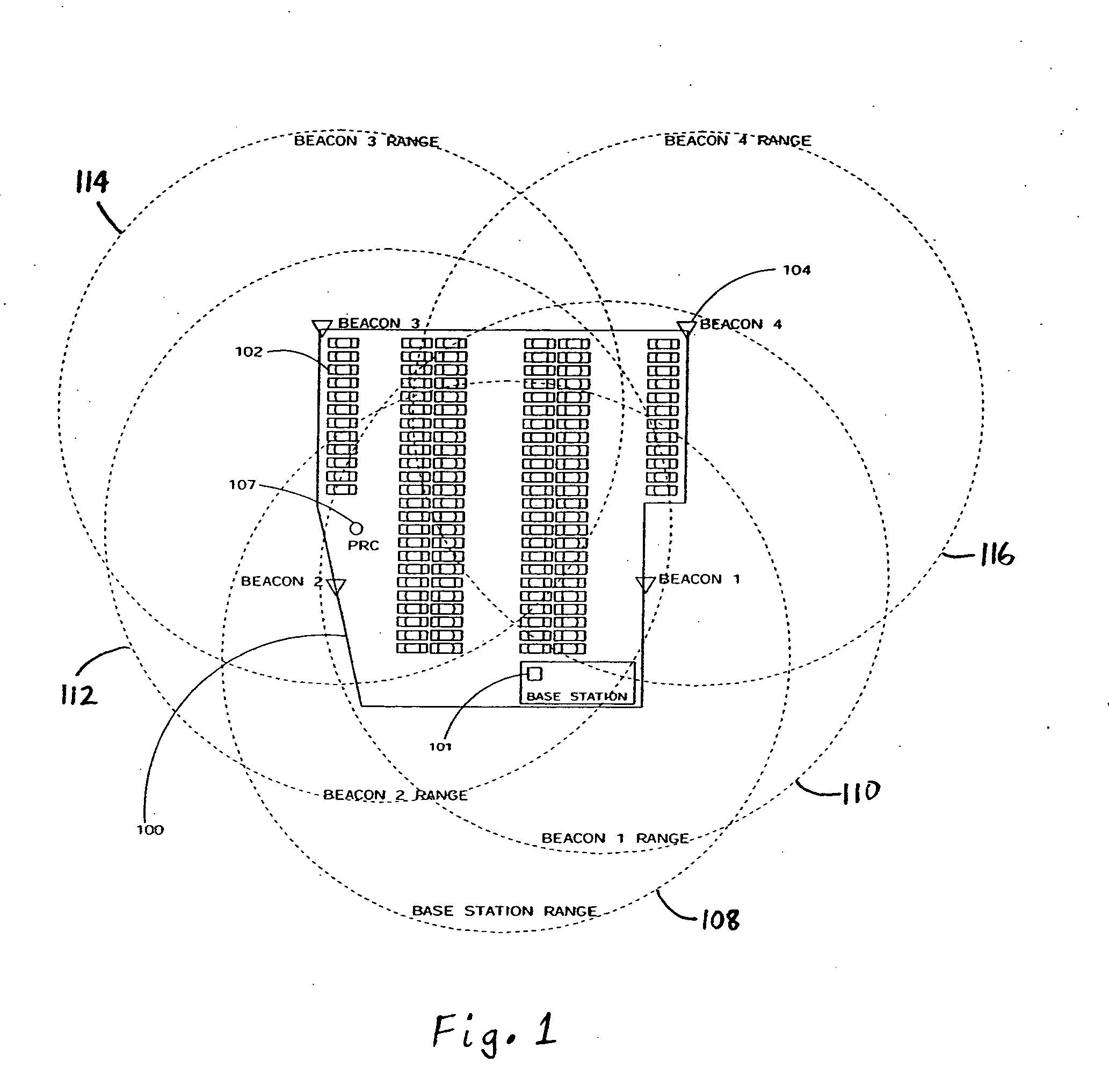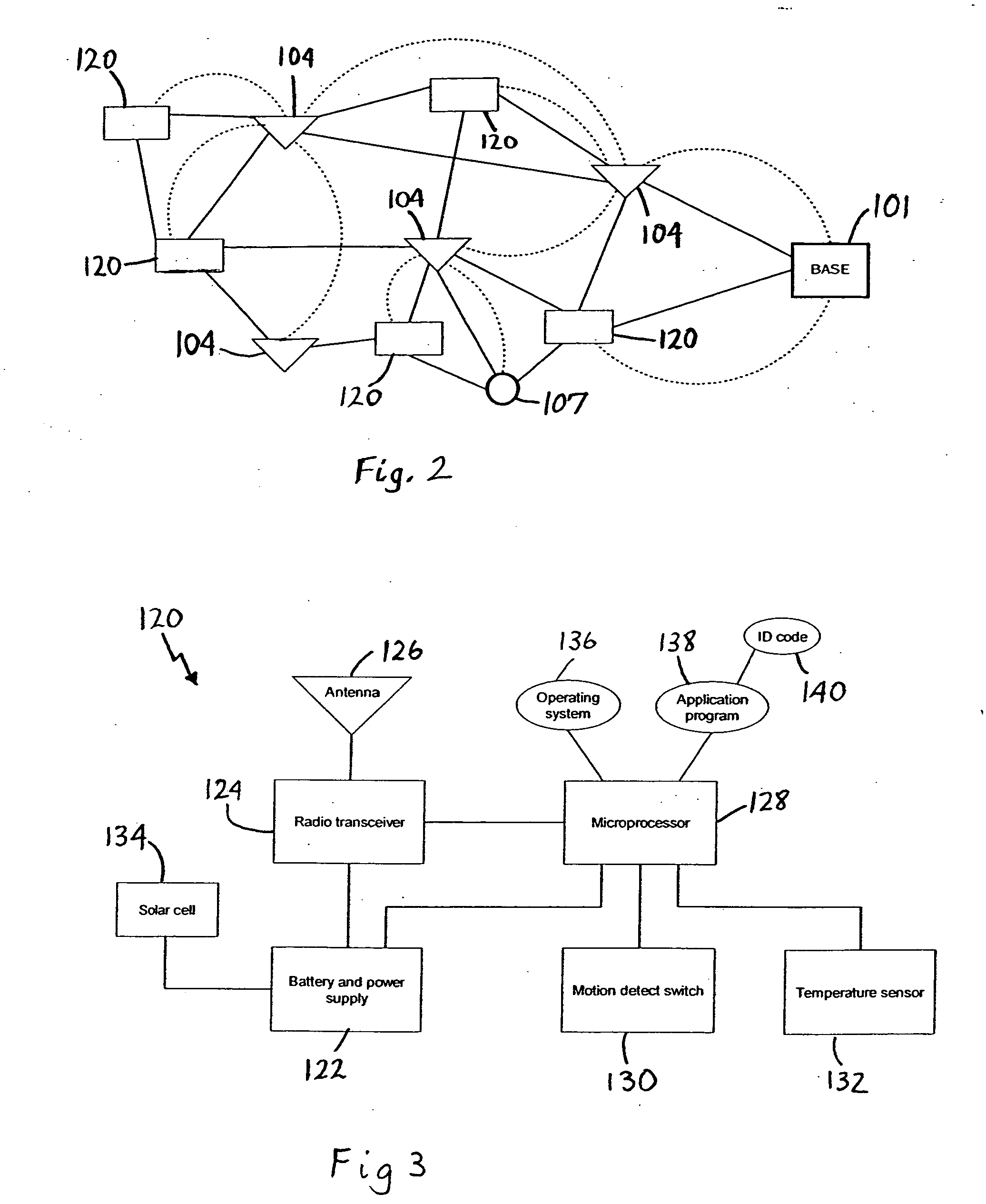Method and system for location of objects within a specified geographic area
a technology of geographic area and method, applied in the direction of wireless communication, electrical equipment, selection arrangements, etc., can solve the problems of reducing wasting time and human resources, and based systems that create significant problems for parking lot operators, so as to reduce the effect of multipath interference and enhance the accuracy of location calculation
- Summary
- Abstract
- Description
- Claims
- Application Information
AI Technical Summary
Benefits of technology
Problems solved by technology
Method used
Image
Examples
Embodiment Construction
[0020] In the following description of exemplary embodiments, reference is made to the accompanying drawings which form a part hereof, and in which it is shown by way of illustration specific embodiments in which the invention may be practiced. It is to be understood that other embodiments may be utilized and structural changes may be made without departing from the scope of the present invention.
[0021]FIG. 1 illustrates a typical parking lot area 100 of arbitrary shape and dimensions wherein a mesh communication network is established to rapidly and accurately identify the location of vehicles, in accordance with one embodiment of the invention. The mesh network includes a base station 101 at an arbitrary location within the lot area 100, a plurality of vehicles 102 each equipped with a portable transceiver device (not shown) attached to or contained within each vehicle 102, and a plurality of stationary communication nodes or beacons 104 positioned at relative locations across th...
PUM
 Login to View More
Login to View More Abstract
Description
Claims
Application Information
 Login to View More
Login to View More - R&D
- Intellectual Property
- Life Sciences
- Materials
- Tech Scout
- Unparalleled Data Quality
- Higher Quality Content
- 60% Fewer Hallucinations
Browse by: Latest US Patents, China's latest patents, Technical Efficacy Thesaurus, Application Domain, Technology Topic, Popular Technical Reports.
© 2025 PatSnap. All rights reserved.Legal|Privacy policy|Modern Slavery Act Transparency Statement|Sitemap|About US| Contact US: help@patsnap.com



